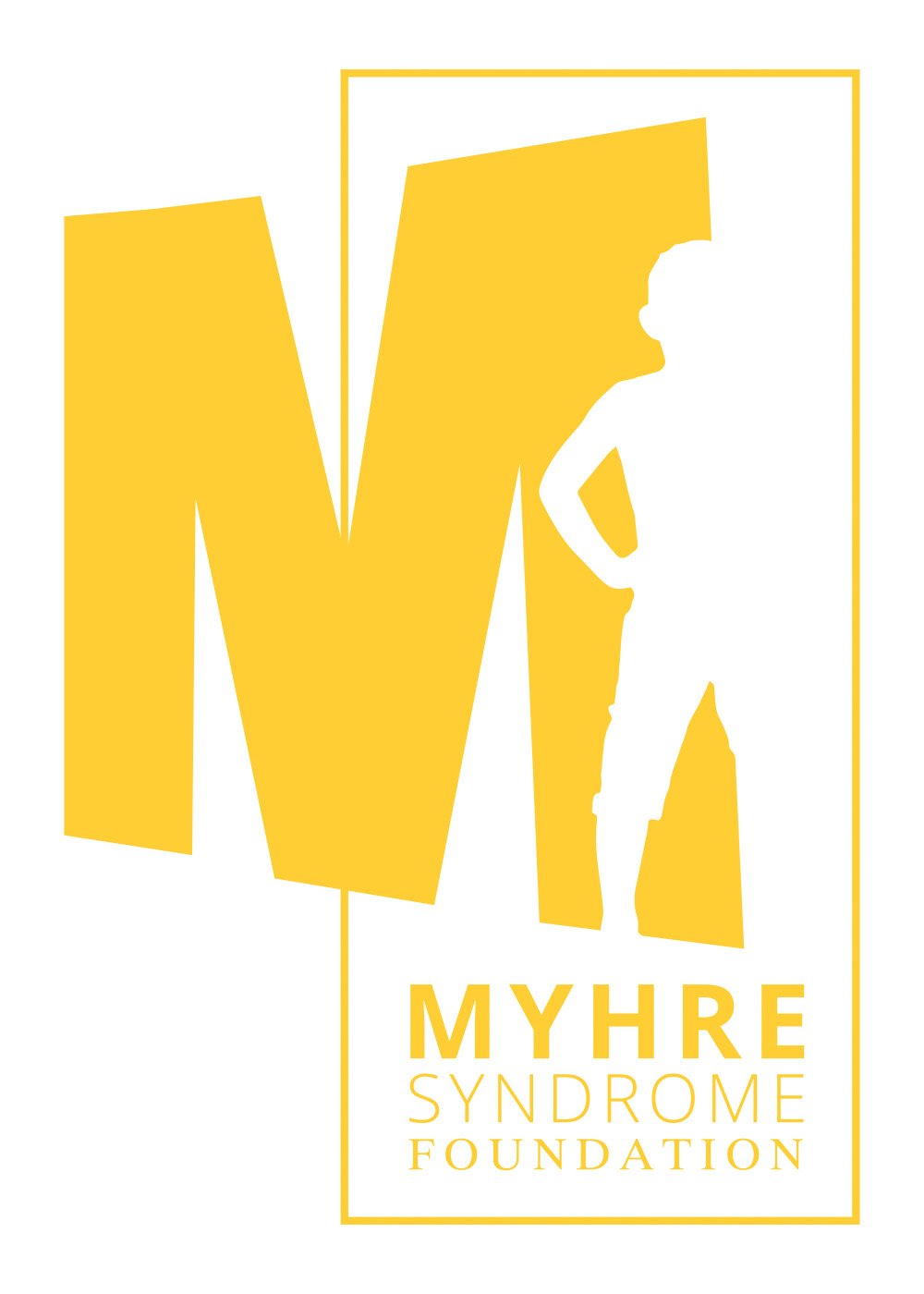Myhre syndrome (MS) is a complex disorder with different genetic variants, many possible symptoms, and varying degrees of severity. Most individuals have many of the features, although these can vary from very mild to severe. Each person is different. Nevertheless, there are similar questions from individuals, caregivers and physicians about diagnosis, treatment, therapy, testing, and prognosis. People are curious about the experiences of other people living with Myhre syndrome.
To help people who live with or care for those with any syndrome, including Myhre syndrome, experts strive to create evidence-based guidelines (EBG). These clinical care guidelines are not inflexible rules, but recommendations. They attempt to bring consistency to management. Formal EBG vary in the strength of the evidence and the strength of the recommendation. Rare disorders are very different from common disorders not only in the number of affected individuals, but in the type of research study that provides evidence.
The members of the Myhre Syndrome Foundation Professional Advisory Board (MSF PAB) discuss their experiences during their bi-monthly virtual meetings which have been held over the past three years. Most of the Myhre syndrome specialists have worked with other syndrome support groups to create EBG. In addition, individual clinic directors are gathering data and formulating guidelines based on their personal experiences. For example, the specialists of the MGH Myhre Syndrome Clinic discuss the schedule and type of follow-up recommended, in the summaries which accompany their consultations. Eventually, there will be an opportunity to pool the knowledge base.
WHAT information goes into EBG?
As mentioned above, EBG are recommendations (not rules) to help guide the diagnosis and treatment of a condition. They are formulated from data that has been collected from patients, treatment outcomes and scientific research. They provide other physicians and specialists with detailed evidence and recommendations on how to best treat patients with a condition.
When creating guidelines, a key element is the questions asked, and for Myhre syndrome these could include.
What is the definition of MS?
How does one diagnose MS?
Who is involved in the diagnosis of MS?
What are the indications for testing?
Are there genotype-phenotype associations?
If there are genotype-phenotype correlations, will this influence recommendations for monitoring, clinical care and follow up?
Is there a need for earlier diagnosis of MS? If so, how can this be achieved?
How do we advance research?
What are priorities for future research? Some people may feel that affordable access to care is the main goal, while others desire basic science research. Most people seek both.
HOW are guidelines created?
For EBG to be created, we need a reality check. Dr Angela Lin, Chair of the PAB, said “We are unable to write evidence-based guidelines until we have the evidence. Evidence is based on research and publishing medical articles. As you can understand, writing papers takes time away from patient care, so it’s hard to do it all. All of the PAB members are working as hard and as fast as they can.”
Creating EBG for Myhre syndrome will follow these steps:
Agree on the Co-Directors of the Guidelines
Form the committees required (organized by organ system i.e. cardiology, pulmonology)
Assign roles within the committees
Create the timeline
Review the literature
Have bi-monthly calls
Decide on the journal where the guidelines will be published
Request endorsements by speciality organizations
Our goal would be to create a clinical based EBG document primarily for physicians and specialists treating patients with MS. We would also try to create a family friendly version to clarify and simplify the recommendations.
WHEN will EBG be available for Myhre syndrome?
Without enough patient information, inaccurate or unnecessary treatment plans could be suggested that would not be in the best interests of everyone with MS. Because MS is a spectrum and different people have different symptoms the PAB needs to ensure the guidelines are considering these variances, and that they report on the known outcomes we have seen in the patient population.
Dr Lin reiterated, “We appreciate how difficult it is for the patient community who are searching for answers to wait. Be assured that we are working hard to get the required data and published research to begin the formation of the guidelines.”
Dr Lin proposes that the PAB convene at a conference to create the guidelines when materials and research is available to review. A proposed date for this is Summer 2023.
WHAT help do we have right now?
For many genetic syndromes, including Myhre syndrome, there is a GeneReviews article. These are written according to a structured template which summarizes common features and recommendations. It provides clinically relevant and medically actionable information in a standardized journal-style format, covering diagnosis, symptoms, and treatment management. Although a GeneReviews cites relevant articles, and includes personal experience, it is not a true “EBG”. It is practical and useful.
The first edition was published in 2017 by Lois J Starr, MD, Noralane M Lindor, MD, and Angela E Lin, MD. Access here, it’s free and families who download the article can share it with their providers.
Dr Lin is happy to inform everyone that she has started the 2022 revision, with an anticipated submission in the fall of 2022. Co-authors will include Dr Starr, Dr Mark Lindsay, and Dr Nicola Brunetti-Pierri.
